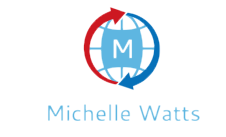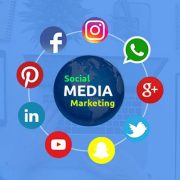First impressions matter when it comes to potential customers evaluating your company. It only takes 7 seconds for people to form an opinion about your brand. Your brand messaging is what can make or ruin that first impression.
Suppose you are looking to create a new brand message or refresh an existing one. In that case, compelling brand messaging will help you communicate the most important aspects of your business to your target audience.
Today, I will give you a complete breakdown of all you need to learn about brand messaging. This includes how to create the best brand messaging framework to make it easier to create the right communications for your company. You’ll also get a free template for brand messaging to help you get started.
What is Brand messaging?
Brand message is the way you communicate to your customers what makes your business unique, such as its mission and values. Your brand messaging encompasses nearly all of your company’s external and internal communications.
A brand messaging frame is a set of guidelines that help you to identify your voice when creating marketing materials such as:
- Website and landing Page Copy
- Email content
- Ads and social media posts
- Copy and creative for search ads
- A mission statement or core values
- OTT Advertising Video Scripts and Creative
- Blog content and SEO
- Local Listing Content
- Taglines and slogans
- Live Chat Scripts
- More!
Here are some of the marketing channels companies use to spread their brand messages:
Why is branding important?
Your brand messaging is important in almost every aspect of your company! It’s an essential part of any marketing strategy. A strong brand messaging structure can have a positive impact on your bottom line. Take a look at these statistics:
- 81% of consumers must trust a brand to buy from them.
- 88% of consumers say that authenticity is a key factor when choosing brands.
- 77% of people purchase brands that share their values.
- Brand consistency can increase revenue for small businesses by 10%-20%.
- Fifteen companies do not have brand messaging guidelines.
- Nearly 50% of enterprises publish off-brand material at least a few times a year.
- 13% of companies don’t enforce brand messaging guidelines.
These data show that brand messaging is a powerful tool to use when you are trying to convince potential customers to work with you. A strong brand messaging structure can also put you in front of your competitors who lack a brand.
How to create a brand messaging framework
You’ll first need to create a framework for brand messaging before you can go live with your brand messaging. Here are seven steps for creating a brand message framework that is right for your business.
Your brand’s mission statement is the first thing you should start with
You may be in a quandary when creating a framework for brand messaging. What came first? Your branding should revolve around the mission statement of your business… but you’ll need a solid messaging framework to create the best possible mission statement.
Your mission statement will help you structure your brand messaging around the core objectives of your business. Try using this post, How to Write a Mission Statement, to focus on your company’s mission as a first step in creating a brand messaging framework. Once your framework has been established, and you have started implementing your brand message, you can go back and tweak your mission statement.
Set goals
You will be able to determine what your brand messaging should ultimately achieve based on the goals you set. Take stock of the short-term and long-term marketing goals for your company to decide which brand messaging should aim towards.
If, for example, one of your goals was to generate more leads, you would likely be trying to increase traffic to your site to encourage potential customers to fill out an online contact form or call your company. You could use this information to create a message for your brand that enables customers to complete the entire process online.
Here are some examples of top brand goals that most businesses use to drive their messaging.
Your target market can be found by researching it.
It’s not just about what you are saying but also the way that you are saying it and, more importantly, to whom you are saying it. Understanding your target audience will help you create the perfect brand message that resonates with them, speaks to them, and convinces them to buy from you. Imagine your ideal client. It might seem silly, but it’s important to do. Consider:
- What they could look like
- Their lifestyle
- They do their job
- Your income
- They may have family members and friends.
- What devices and platforms they may use, when they would be using them
- Where they live
- What they do to have fun
- What type of content and brands do they like?
Consider your target audience traits such as these to help you determine how best to craft and deliver the brand message.
If your business targets middle-aged homeowners, you may want to focus on a family-friendly brand message, as your customers are likely to prioritize their family time. You could also decide to use OTT ads, similar to Hulu ads, as a marketing channel for your brand message because your target audience will likely be streaming home improvement shows.
Brand messaging analysis of your competitors
This brand messaging framework is not meant to be used as a way to copy or tease the messaging of your competitors in your content. Two-thirds of consumers find it annoying when brands poke fun at their competitors. You don’t need to analyze your competitors to develop a defensive messaging framework.
Use the messaging of your competitors instead to determine what you might or might not like in your content. You can learn a lot from how your competitors are presenting themselves. It can also help you to understand the standards in your industry.
Create your unique brand voice guidelines.
Your brand messaging framework, as I said earlier, is essentially a set of guidelines that will help you shape your marketing communication. This will lead to some rules being set. It’s important to have a standard set up to help your team follow the brand guidelines.
Include any notes or even examples of the ideal voice and tone you would use based on your audience. Refer to your Brand Kit to see if you have any preferences for grammar, fonts, or creative elements that may impact the way your brand message is presented.























Comments